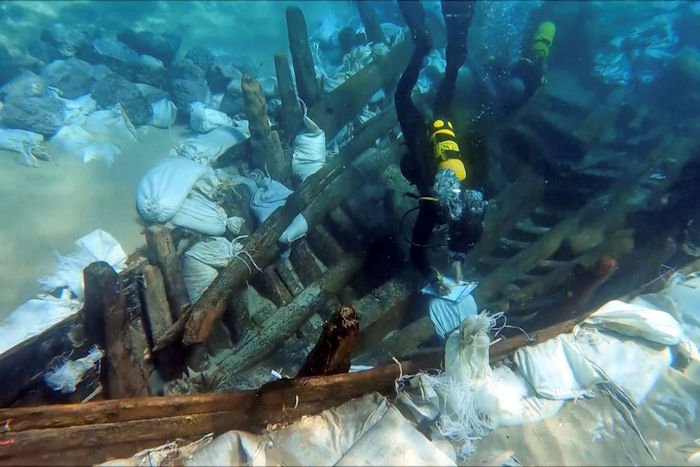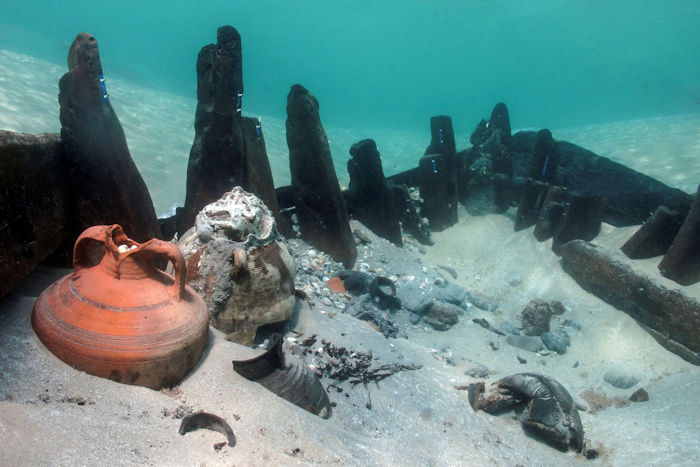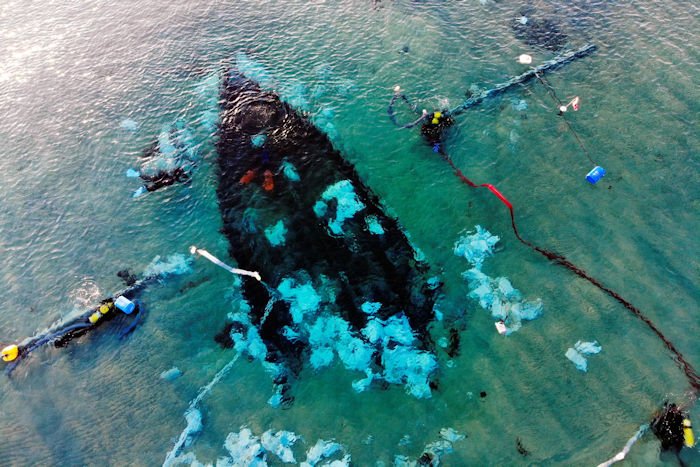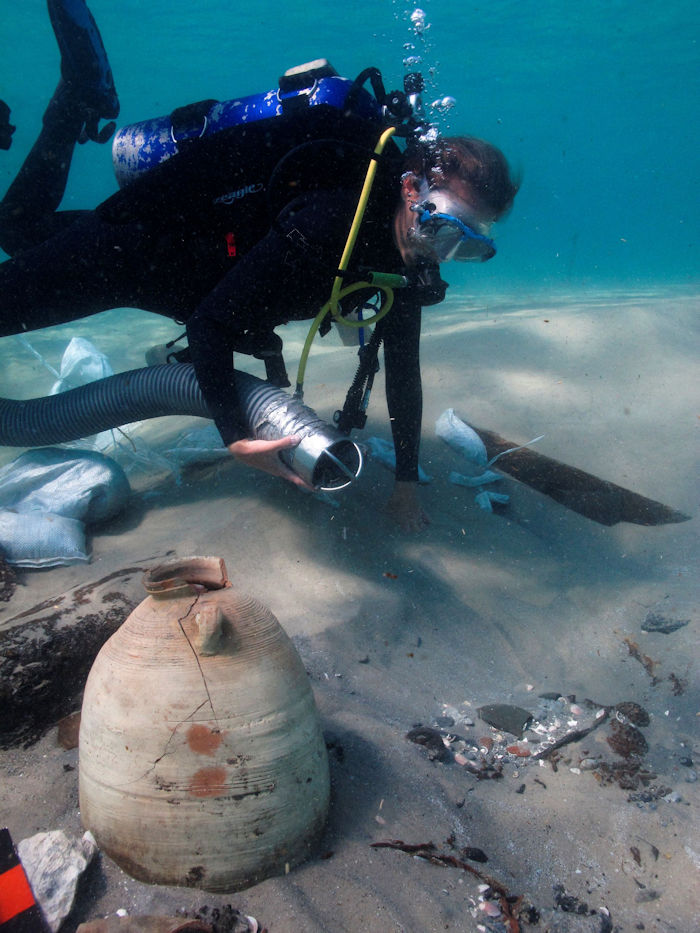Jan Bartek – AncientPages.com – It may have been a storm or something else, but scientists now know a ship loaded with cargo from all over the Mediterranean ended its journey after sinking off the coast of Israel 1,200 years ago.
The shipwreck offers evidence that traders from the West still came to port even after the Islamic conquest of the Holy Land. based on the findings so far, researchers have determined that the ship had docked in Cyprus, Egypt, maybe Turkey, and perhaps as far away as the North African coast. Its cargo is very interesting because some bore symbols of the Christian Byzantine church and others had writings in Arabic.

A view of the excavation of a 25-meter cargo ship from the 7th or 8th century AD, which carried goods from all over the Mediterranean, according to Deborah Cvikel, a nautical archaeologist at Haifa University, in Kibbutz Ma’agan Michael, Israel. Credit: Reuters
The cargo is from a period when the largely Christian Byzantine Empire was losing its grip on the area, and Islamic rule was extending its reach.
“This shows that trade persisted with the rest of the Mediterranean despite the religious divide, said Deborah Cvikel, a nautical archaeologist at the University of Haifa and director of the dig that found the shipwreck.

Credit: Reuters
“The history books, they usually tell us that… commerce almost stopped. There was no international commerce in the Mediterranean. We had mainly smaller vessels sailing along the coast doing sabotage. But this no longer seems to be the case.
Here we have a large shipwreck, which we think the original ship was around 25 meters (82 feet) long, and…had cargo from all over the Mediterranean,” she said.
The sea off the coast of Israel is shallow, and the sandy bottom preserves artifacts. Over the millennia, the region has turned into a huge graveyard where long-forgotten ships rest awaiting discovery.

Credit: Reuters
The excavation of the 1,200-year-old shipwreck found at Maagan Michael is backed by the Israel Science Foundation, Honor Frost Foundation and the Insтιтute of Nautical Archaeology at Texas A&M University.
“Two amateur divers spotted a piece of wood sticking out from the bottom and reported it to authorities.
Eight excavation seasons later, Cvikel’s team has mapped out much of the 20-meter-long, five-meter-wide wooden skeleton that remains.
Using underwater vacuums to clear out 1.5 meters of sand, they found over 200 amphoras that still contained ingredients from the Mediterranean diet, like fish sauce, and a variety of olives, dates and figs.

Credit: Reuters
There were sailing tools like ropes and personal items such as wooden combs, as well as animals, including the remains of beetles and six rats,” the Reuters reports.
“You have to be very attentive because some of the remains, like fish bones, or rat bones, or olive pits, they are so tiny that it could be lost in a split second,” Cvikel said.
See also: More Archaeology News
The next step is to properly examine the shipwreck before it is hopefully removed from the waters and put on display to the public.
![]()
Article in Portuguese – here
Written by Jan Bartek – AncientPages.com Staff Writer





